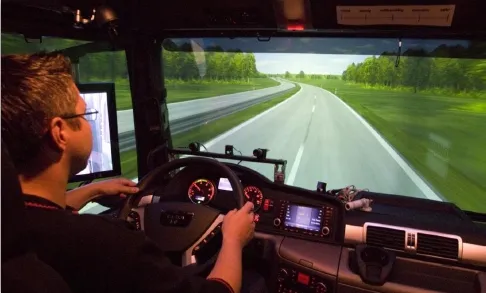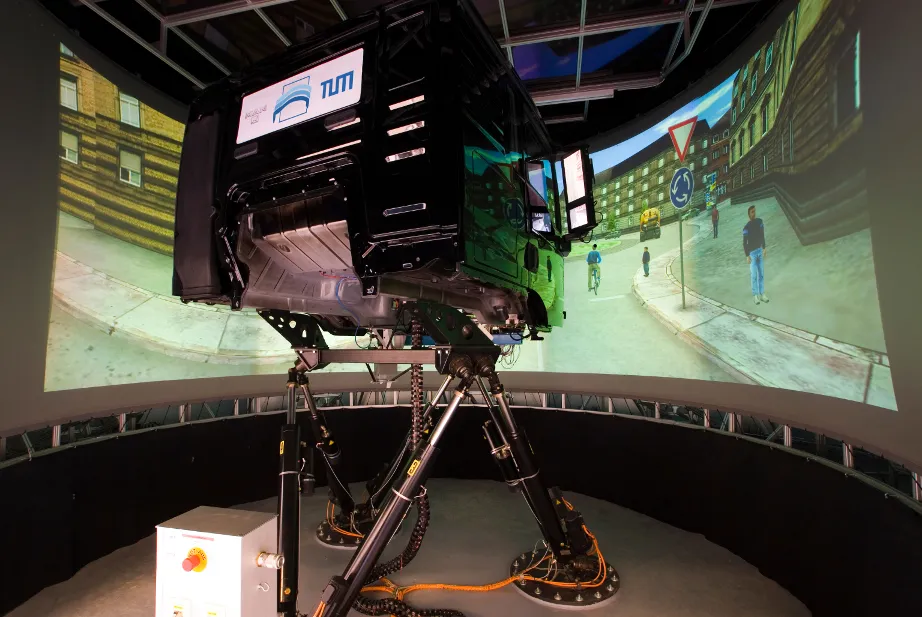At the Institute of Automotive Technology (FTM), a dynamic driving simulator is used in order to carry out driving tests in a virtual environment. Due to this simulation environment the experiments are free of external interference and can therefore be reproduced exactly. In addition, the simulator enables a harmless representation of critical traffic situations and extreme driving manoeuvres. Thus, new systems can be tested in realistic scenarios in a very early, prototypical stage of the development.
In order to provoke a high sense of presence with the drivers and test persons, a variety of measures is implemented at the driving simulator. The visualization of the environment is realized by a projection system featuring a large field of view (horizontal viewing angle 210°, image height 2.9 m). This system is completed by three flat screens in order to display the rear mirror views. To generate an impression of acceleration, the simulator has a motion system with six degrees of freedom. Currently, the driver’s cab of a serious-production heavy-duty truck is mounted on the motion system which contributes to a further enhancement of the immersion. A high-fidelity audio system is installed inside the truck cab generating the sound of the vehicle and the environment.
With the available measurement equipment vehicle-specific data can be recorded. For this reason, an interface between simulation and CAN bus has been established. Four cameras are installed in the cab in order to observe the driver. If necessary, additional data can be recorded (e. g. physiological variables such as skin conduction). The simulation software also allows the integration of virtual sensors which can hardly, if at all, be realized in a real-life environment.
The dynamic driving simulator of the FTM has proven to be an excellent tool for development, testing, and research – among others in the following areas:
- Advanced Driver Assistance Systems (ADAS),
- Human-machine interaction, control and display elements,
- Driver behavior and human-machine-environment communication,
- Interior design and package,
- Driver drowsiness detection.


